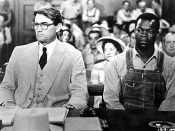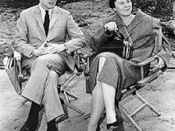Despite his clear innocence, a black man is tried unjustly and decreed guilty because of his different skin color. The townspeople blame the causes of bad incidents on a blameless recluse because of his different lifestyle. A teacher mistreats her student because she is different from other students. All of these problems and conflicts share a common root: close-mindedness. In To Kill a Mockingbird, Harper Lee condemns this close-mindedness, the intolerance of differences within others, in a Southern society because it is destructive and debilitating.
Close-mindedness shows itself in various forms among the members of a Southern society, Maycomb. First, it stems from rejection of people who have different skin colors. In Maycomb, the white people repress and discriminate against the black people. For example, despite his eloquent speech and cogent arguments that clearly prove Tom Robinsonáïs innocence, Atticus fails to persuade the racist juries to decree Tom Robinsonáï acquittal.
After his unjust trial, Tom Robinson, a black man, is convicted and thus becomes the scapegoat of the racism in the town.
Another form of close-mindedness exists in the relationship between Miss Caroline and Scout. When Scout goes to the elementary school, she already knows read so Miss Caroline, her teacher, does not need to teach her but her peers. Because Scout is edified and is more knowledgeable than others, Miss Caroline feels as if her authority is on the brink. Frustrated and desperate, Miss Caroline becomes close-minded against and begins to mistreat Scout because she views Scout as a threat. So, when Scout tries to explain to Miss Caroline that Walter cannot pay Miss Caroline back her money, she does not try to listen and instead slaps her with a ruler.
Another example is Boo Radley, the recluse in Maycomb. Boo Radley lives alone and almost never...


